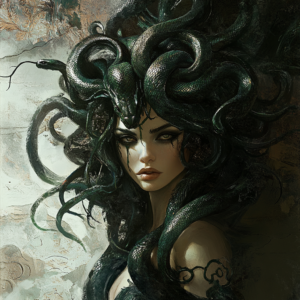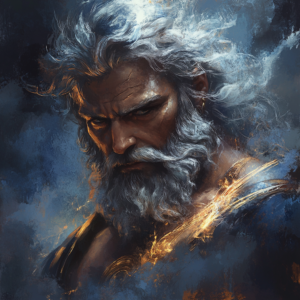I’m starting a new series on the website dedicated to mythology and meaning, where I’ll be exploring ancient myths and their symbolic meanings in modern times. I’m hoping to uncover how these timeless stories still resonate in our modern lives. To kick things off, I’m starting with an exploration of Pegasus, the winged horse of Greek myth, simply because during one of my shamanic dream journeys this week, I met Pegasus. Near the end of the journey, he flew down from the sky to meet me, confirming a message about trusting my intuition as I step into this new phase of my creative and spiritual soul adventure.

In Greek mythology, Pegasus is a creature of rare beauty and power, a winged horse born from one of the most unusual and dramatic stories of the ancient world. His mythic origins, his relationship to the gods, and his symbolic resonance have inspired imaginations for millennia. As an amateur mythologist, I feel it’s impossible to overlook how Pegasus captures the tension between the earthly and the divine, while embodying creativity, transcendence, and the eternal quest for inspiration.
The Birth of Pegasus: A Creature Born of Chaos
Pegasus’s birth is as mythical as his existence. He sprang forth from the blood of Medusa, a Gorgon, after her death at the hands of the hero Perseus. Medusa, once a beautiful woman, was cursed by Athena to become a hideous monster whose gaze turned men to stone. When Perseus beheaded Medusa, her blood fell into the sea, and from this violent, chaotic act, Pegasus and his brother, Chrysaor, were born.

This birth is rich with symbolic meaning. Medusa represents chaos, darkness, and the terrifying aspects of the feminine archetype. Yet, from her death comes Pegasus—a creature of light, purity, and divine power. In this sense, Pegasus symbolises the potential for beauty and inspiration to emerge from the darkest, most chaotic corners of existence. He is a reminder that creativity often springs from difficult or even traumatic experiences and is transformed through the alchemy of the imagination.
Pegasus and the Divine: The Horse of the Gods
Once born, Pegasus ascended to Mount Olympus, where he was given a role of celestial significance. He became Zeus’s trusted steed and was entrusted with the task of carrying the thunderbolts that Zeus hurled during his battles. Pegasus, in this role, serves as a mediator between the earthly and divine realms, moving freely between the mortal world and the heavens.

This aspect of Pegasus points to his role as a psychopomp—a figure who guides souls or messages between different planes of existence. In myth and ritual, the psychopomp serves as a bridge between the human and the divine, and Pegasus embodies this intermediary function. His wings allow him to transcend the ordinary world and enter the sphere of the gods, making him a symbol of spiritual elevation, transformation, and the aspiration towards a higher consciousness.
Pegasus and Inspiration: The Fountain of the Muses
One of the most enduring associations with Pegasus is his connection to the Muses, the goddesses of artistic inspiration. Legend holds that Pegasus struck Mount Helicon with his hooves, causing the sacred spring of Hippocrene to burst forth. This fountain was said to be a source of poetic inspiration, and those who drank from its waters would be blessed with creativity and insight.
Here, Pegasus becomes a direct link to the world of art, music, poetry, and all forms of creative expression. His ability to tap into the earth and unleash a wellspring of inspiration symbolises the connection between the creative mind and the subconscious. Just as Pegasus draws from the earth to bring forth the fountain, artists and creators draw from their inner depths to express something profound and transformative. This association also reflects the idea that creativity is both divine and grounded, an intersection of the spiritual and material worlds.
The Winged Horse: Transcendence and Freedom
The wings of Pegasus are perhaps his most iconic feature. They represent the ability to rise above, to transcend limitations, and to explore realms that are ordinarily inaccessible. Wings, in general, are potent symbols in mythology, often signifying spiritual ascension, freedom, and the soul’s journey beyond the physical world.
In many ways, Pegasus’s wings are a metaphor for the creative process itself. To create is to lift oneself beyond the ordinary and reach for something higher. Like Pegasus, the artist or dreamer transcends the mundane and enters a realm of limitless possibility, unbound by earthly concerns. Wings also evoke the lightness and joy that come from following inspiration, suggesting that true creativity is both liberating and exhilarating.

Pegasus and the Hero’s Journey
Although Pegasus is often depicted alongside gods and goddesses, he is also tied to the hero’s journey. The most notable hero associated with Pegasus is Bellerophon, who, with the help of the goddess Athena, tamed the wild horse. Bellerophon rode Pegasus during his battle with the Chimera, a fearsome monster with the body of a lion, the head of a goat, and the tail of a serpent. With Pegasus’s help, Bellerophon soared above the creature and defeated it with arrows, a victory that would have been impossible without the winged horse.
In this context, Pegasus represents the aid that comes from the divine, or from the higher self, during moments of great trial. The horse’s ability to fly allows Bellerophon to overcome a seemingly insurmountable challenge, suggesting that tapping into inspiration, intuition, or spiritual guidance can offer the perspective needed to solve life’s most difficult problems. Yet, the story also serves as a cautionary tale: when Bellerophon attempted to ride Pegasus to Mount Olympus and join the gods, he was struck down for his hubris. Pegasus continued his flight to Olympus alone, underscoring the idea that divine power is not to be controlled or possessed, but to be honoured and respected.
Pegasus as a Symbol Today
Pegasus remains a powerful symbol in modern culture, often representing freedom, imagination, and inspiration. As a figure of myth, he has transcended his original context to become a universal symbol of the creative spirit. He reminds us that imagination has the power to lift us beyond the ordinary and connect us to something greater. Whether seen as a source of artistic inspiration, a guide in spiritual transformation, or a figure of transcendence, Pegasus endures as a timeless emblem of the power of creativity.
In the end, Pegasus is more than a mythological creature. He represents the infinite potential within each of us to rise above, to create, and to connect with the divine source of inspiration. Just as Pegasus was born from chaos, so too can our most beautiful and transcendent creations emerge from the challenges we face, lifting us to new heights of understanding and expression.
Discover more from soulcruzer
Subscribe to get the latest posts sent to your email.
[…] Myths are the timeless mirrors of the human soul. They reflect universal truths and guide us towards self-understanding. In short, they connect us to the larger narrative of existence and help us to create meaning. Today’s Mythological Deep Dive: Pegasus. […]
blew me away Greek Mythology was something I endured as a kid and now this is bringing a whole new dimension and meaning to it. Just imagine if kids were taught about the ancient in this entertaining but highly relevant way – the sky would not be the limit!
I agree. The classes I remember the most are the ones taught by entertaining and insightful teachers who were great storytellers.